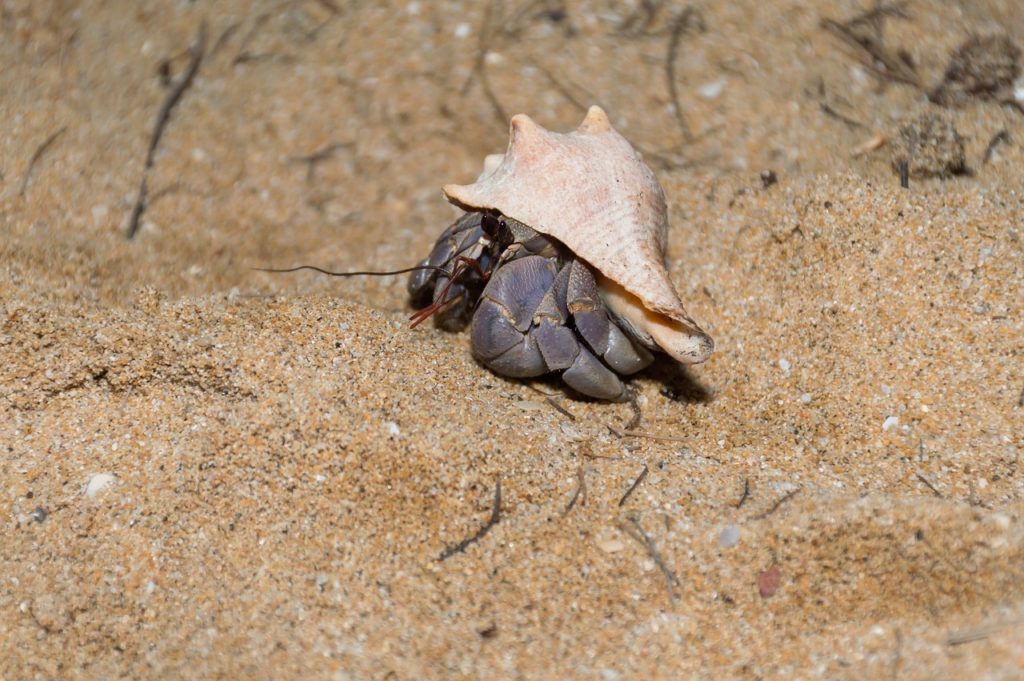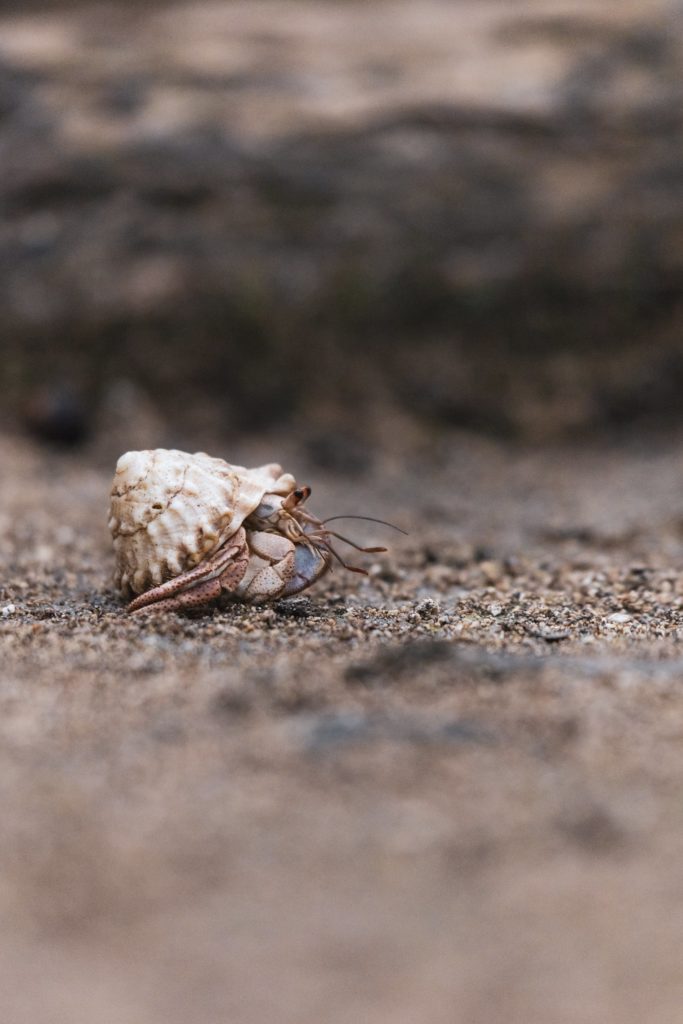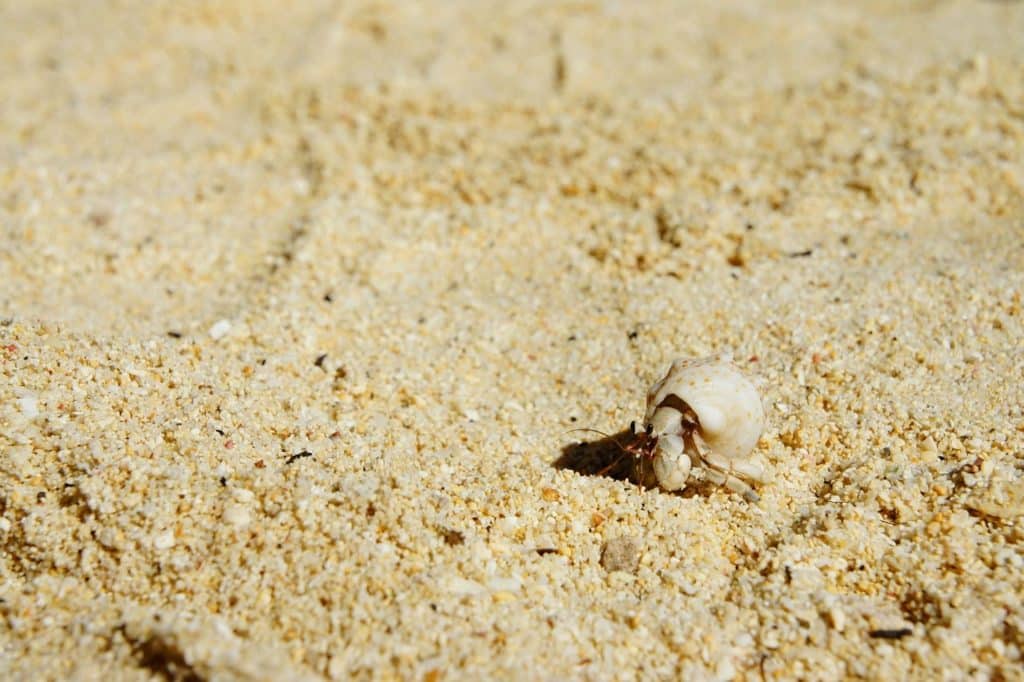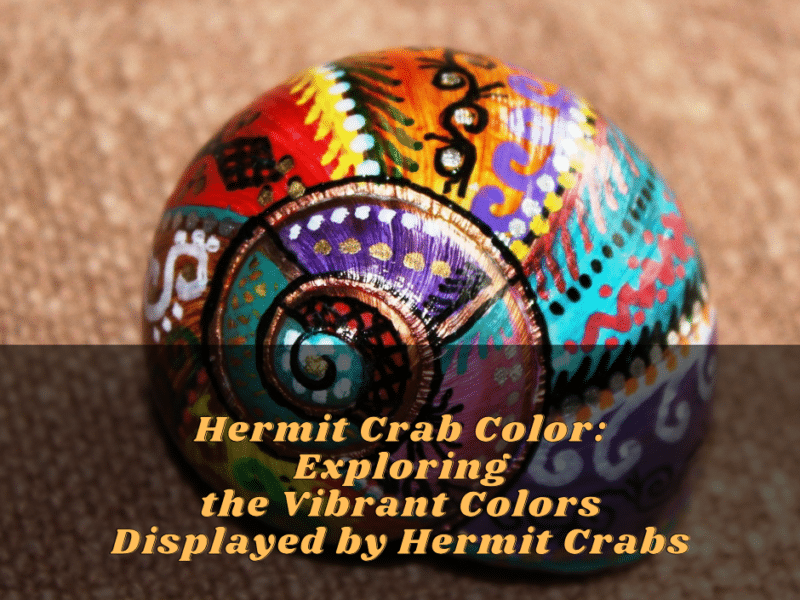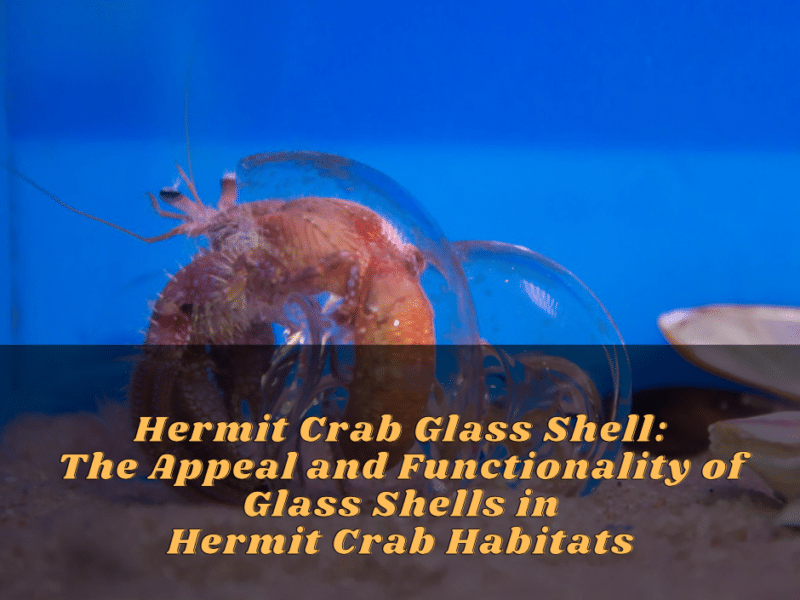How Do Hermit Crabs Drink? Introduction
Captivating world of hermit crabs
Hermit crabs are fascinating creatures that inhabit various marine environments around the world. These crustaceans belong to the superfamily Paguroidea and are known for their unique behavior of using empty seashells as their portable homes. The shell provides them protection and also serves as a shelter to retract their soft abdomen for added safety. With their colorful exoskeletons and distinctively large claws, hermit crabs have captivated the interest of researchers and enthusiasts alike. Let’s dive deeper into their world to uncover the secrets of their hydration techniques.
Unraveling the mysteries behind their hydration techniques
One of the interesting aspects of hermit crab behavior is their ability to adapt to different water sources for hydration. These creatures have evolved to extract water from various environments, including both freshwater and saltwater. Comparing their drinking behavior, there are several factors that contribute to their ability to stay hydrated:
- Anatomical adaptations: Hermit crabs have specialized structures called branchiostegite gills that allow them to extract oxygen from the surrounding water. These gills also enable them to absorb moisture, which helps in maintaining adequate hydration levels.
- Water conservation: Hermit crabs have a remarkable ability to conserve water within their bodies. This enables them to survive in environments with limited water availability for extended periods.
- Behavioral adaptations: Hermit crabs exhibit interesting drinking behaviors. They have been observed dipping their legs or claws in water and then bringing it close to the mouth to absorb moisture. Some species have also been known to rely on dew or rainwater to fulfill their hydration needs.
- Water source preferences: Different species of hermit crabs exhibit varying preferences for water sources. Some species are more adapted to freshwater environments, while others thrive in saltwater conditions. The availability of suitable water sources is crucial for their survival in captivity.
Understanding the hydration techniques and water requirements of hermit crabs is essential for providing suitable environments for pet hermit crabs. In the following sections, we will delve deeper into how we can create optimal water environments for these fascinating creatures and ensure their well-being. Stay tuned to discover the secrets behind hermit crab drinking behavior and how we can quench their thirst in captivity.
Introduction
Hermit crabs are fascinating creatures that inhabit various marine environments around the world. These crustaceans belong to the superfamily Paguroidea and are known for their unique behavior of using empty seashells as their portable homes. The shell provides them protection and also serves as a shelter to retract their soft abdomen for added safety. With their colorful exoskeletons and distinctively large claws, hermit crabs have captivated the interest of researchers and enthusiasts alike. Let’s dive deeper into their world to uncover the secrets of their hydration techniques.
Unraveling the mysteries behind their hydration techniques
One of the interesting aspects of hermit crab behavior is their ability to adapt to different water sources for hydration. These creatures have evolved to extract water from various environments, including both freshwater and saltwater. Comparing their drinking behavior, there are several factors that contribute to their ability to stay hydrated:
- Anatomical adaptations: Hermit crabs have specialized structures called branchiostegite gills that allow them to extract oxygen from the surrounding water. These gills also enable them to absorb moisture, which helps in maintaining adequate hydration levels.
- Water conservation: Hermit crabs have a remarkable ability to conserve water within their bodies. This enables them to survive in environments with limited water availability for extended periods.
- Behavioral adaptations: Hermit crabs exhibit interesting drinking behaviors. They have been observed dipping their legs or claws in water and then bringing it close to the mouth to absorb moisture. Some species have also been known to rely on dew or rainwater to fulfill their hydration needs.
- Water source preferences: Different species of hermit crabs exhibit varying preferences for water sources. Some species are more adapted to freshwater environments, while others thrive in saltwater conditions. The availability of suitable water sources is crucial for their survival in captivity.
Understanding the hydration techniques and water requirements of hermit crabs is essential for providing suitable environments for pet hermit crabs. In the following sections, we will delve deeper into how we can create optimal water environments for these fascinating creatures and ensure their well-being. Stay tuned to discover the secrets behind hermit crab drinking behavior and how we can quench their thirst in captivity.
What is Osmosis?
The process of osmosis
Osmosis is a biological process that involves the movement of solvent molecules, typically water, from an area of lower solute concentration to an area of higher solute concentration through a semipermeable membrane. It is a passive process that occurs spontaneously to equalize the concentration of solutes on both sides of the membrane.
How hermit crabs rely on osmosis for hydration
Hermit crabs rely on osmosis to hydrate themselves. When in contact with water, the gills on their specialized branchiostegite structures allow the diffusion of water molecules into their bloodstream. This process helps maintain the necessary level of hydration and can occur in both freshwater and saltwater environments.
Hermit Crab’s Drinking Behavior
Exploring how hermit crabs drink water
Hermit crabs have fascinating drinking behaviors that are adapted to their unique habitats and hydration needs. Let’s uncover some of the interesting ways hermit crabs quench their thirst:
- Dipping and Absorbing: Some hermit crab species have been observed dipping their legs or claws in water and then bringing it close to their mouth to absorb moisture. This behavior allows them to take in water and stay hydrated.
- Relying on Dew and Rainwater: In their natural environments, hermit crabs may rely on dew or rainwater as a source of hydration. They can collect these water droplets from leaves or surfaces and absorb them for hydration.
- Drinking through Gills: Hermit crabs have specialized structures called branchiostegite gills, which not only help them extract oxygen from the water but also allow them to absorb moisture. This mechanism enables them to stay hydrated in aquatic environments.
These drinking behaviors demonstrate the adaptability and resourcefulness of hermit crabs in obtaining water for their hydration needs. Understanding these unique mechanisms is essential for recreating suitable water environments for pet hermit crabs.
Unique mechanism of drinking for hermit crabs
The ability of hermit crabs to extract moisture from their surroundings through osmosis plays a crucial role in their hydration. When in contact with water, the gills on their specialized branchiostegite structures allow the diffusion of water molecules into their bloodstream. This process ensures the necessary level of hydration and can occur in both freshwater and saltwater environments.
Hermit crabs have evolved to adapt to different water sources for their hydration needs. Their anatomical adaptations, water conservation abilities, and behavioral strategies enable them to thrive in diverse marine environments.
Creating optimal water environments for hermit crabs involves understanding their drinking behavior and providing suitable water sources. This knowledge allows us to ensure their well-being and provide them with the necessary hydration for a healthy and thriving life.
Adaptation to Different Water Sources
Hermit crabs’ ability to adapt to various water environments
Hermit crabs have remarkable adaptability when it comes to different water sources. Their survival depends on their ability to find water in their natural habitats, and they have developed unique strategies to obtain hydration in diverse marine environments. Let’s explore how hermit crabs navigate these various water sources:
- Freshwater and Saltwater Tolerance: Hermit crabs can adapt to both freshwater and saltwater environments. They have the physiological adaptations to handle the different salinity levels, allowing them to thrive in various habitats such as beaches, mangroves, and coral reefs.
- Water Conservation Mechanisms: Hermit crabs have evolved efficient water conservation abilities to cope with limited water availability. They can minimize water loss through their exoskeleton and regulate their metabolic water production, enabling them to withstand long periods without access to water.
- Hydration from Multiple Sources: In addition to direct drinking behaviors, hermit crabs can also obtain water from sources such as dew, rainwater, and even the moisture in their food. This adaptability allows them to sustain their hydration even in challenging environments.
- Behavioral Strategies: Hermit crabs exhibit behaviors that aid in finding suitable water sources. They actively explore their surroundings, including digging in sand or mud to locate buried sources of water. They also have a keen sense of smell, helping them locate water even in small quantities.
How hermit crabs find suitable water to hydrate themselves
Hermit crabs employ various mechanisms to find suitable water sources for hydration. Here are some methods they use:
| Behavior | Description |
|---|---|
| Scavenging | Hermit crabs are opportunistic drinkers and will scavenge for water in their surroundings, including natural water sources like tide pools and wet sand. |
| Recognizing Water Sources | Through a combination of their sense of smell and behavior, hermit crabs can detect water sources even in small quantities, enabling them to locate them efficiently. |
| Digging | Hermit crabs may dig into the sand to find buried water sources, such as groundwater or damp areas, where they can absorb moisture. |
| Exploration | Hermit crabs have a natural instinct to explore their environment in search of suitable water sources. This behavior allows them to find hidden pockets of water in their habitat. |
Understanding the adaptability of hermit crabs to different water sources and their methods of finding hydration is essential for providing appropriate water environments for pet hermit crabs. By recreating their natural habitats and ensuring access to suitable water sources, we can help these fascinating creatures thrive and maintain their well-being.
Providing Suitable Water Environments for Pet Hermit Crabs
Creating an optimal water environment for pet hermit crabs
Hermit crabs are fascinating creatures that require proper hydration to stay healthy and happy. As responsible pet owners, it is important to create an optimal water environment for them. Here are some factors to consider:
- Freshwater and Saltwater Tanks: Pet hermit crabs need access to both freshwater and saltwater pools to meet their hydration needs. Make sure to provide two separate pools of water for them, one with freshwater and the other with saltwater. This mimics their natural habitat and allows them to choose the water source they need at any given time.
- Filtered Water: It is crucial to provide clean and filtered water for your pet hermit crabs. Tap water may contain harmful chemicals or impurities that can adversely affect their health. Use a water conditioner to remove chlorine and chloramines from the water before adding it to their tanks.
- Proper Water Depth: The depth of the water in the pools is important for the well-being of your hermit crabs. The freshwater pool should be shallow enough for them to drink and replenish their shell water easily. The saltwater pool can be deeper, as hermit crabs usually visit it less frequently.
Factors to consider for providing adequate hydration
Apart from maintaining the appropriate water environment, there are a few more factors to consider to ensure that your pet hermit crabs stay adequately hydrated:
- Humidity Levels: Hermit crabs require a humid environment to keep their gills and bodies moist. Use a hygrometer to monitor the humidity levels in their tank and adjust it if needed. Aim for a humidity range of 70-80%.
- Misting or Spraying: Regularly mist or spray the tank with water to increase humidity. This helps to create a conducive environment for hermit crabs and prevents them from drying out.
- Providing Moist Foods: In addition to drinking water and replenishing shell water, hermit crabs also obtain moisture from their food. Offer them a varied diet that includes fresh fruits, vegetables, and moist foods like shrimp or crab pellets.
By taking these factors into consideration and providing a suitable water environment, you can ensure that your pet hermit crabs stay hydrated and thrive in their habitat. Regularly monitor and maintain the water conditions to promote their overall well-being. Remember, a happy and healthy hermit crab is a joy to have as a pet!
Importance of Water for Hermit Crabs
Understanding the significance of water in hermit crabs’ lives
Water is not only essential for human survival but also plays a crucial role in the wellbeing of hermit crabs. These fascinating crustaceans rely on water to maintain their overall health and carry out various physiological functions within their bodies.
Water as a crucial element for their survival
Here are some key points explaining why water is vital for the survival of hermit crabs:
- Hydration: Just like humans, hermit crabs need water to quench their thirst and stay hydrated. Water helps in maintaining their bodily functions and preventing dehydration.
- Replenishing Shell Water: Hermit crabs carry water in their shells to keep their gills moist. They periodically sip water to replenish the shell moisture, ensuring proper respiration.
- Molting: Molting is a vital process for hermit crabs, where they shed their exoskeleton to grow. Water plays a crucial role during molting by softening the old exoskeleton, making it easier for the crab to shed.
- Regulating Body Temperature: Hermit crabs depend on water to regulate their body temperature. They can cool down by submerging themselves in water or warm up by basking in the sun.
To ensure hermit crabs stay healthy and hydrated, it is crucial to provide suitable water environments when keeping them as pets. Creating an optimal water environment involves considering factors such as freshwater and saltwater tanks, filtered water, and proper water depth. Additionally, maintaining humidity levels, misting or spraying the tank, and providing moist foods also contribute to their hydration.
By taking these factors into consideration and providing a suitable water environment, you can ensure that your pet hermit crabs stay hydrated and thrive in their habitat. Regularly monitoring and maintaining the water conditions will promote their overall well-being. Remember, a healthy and hydrated hermit crab is a joy to have as a pet!
Contrasting Hermit Crabs’ Drinking Behavior with Humans
Comparing hermit crabs’ drinking mechanism to humans
While water is essential for both hermit crabs and humans, there are significant differences in how these two species consume and utilize this vital resource. Understanding these distinctions can help us appreciate the diverse ways in which organisms adapt to their environments.
Highlighting the differences in quenching thirst
Here are some key points that highlight the contrasting drinking behaviors of hermit crabs and humans:
- Method of drinking: Humans typically ingest water orally, through their mouths. On the other hand, hermit crabs absorb moisture through specialized structures known as gills, as well as their exoskeletons.
- Frequency of drinking: While humans may drink water throughout the day to stay properly hydrated, hermit crabs have evolved to store water in their shells. This stored water helps them survive in areas where fresh water is scarce.
- Hydration requirements: Due to their different physiological structures, hermit crabs have lower hydration requirements compared to humans. Their ability to absorb moisture from the environment and store it provides them with an efficient way of staying hydrated.
- Preference for water sources: Humans have preferences for different types of water sources, such as tap water or bottled water. In contrast, hermit crabs require both freshwater and saltwater environments to fulfill their hydration needs.
Understanding these differences between hermit crabs and humans highlights the incredible diversity of organisms and how they adapt to their specific habitats. While humans may take water consumption for granted, it is fascinating to learn about the unique ways in which other species, like hermit crabs, have evolved to survive and thrive.
Fascinating Facts About Hermit Crab’s Hydration
Surprising discoveries about hermit crabs and water
Water is a fundamental resource for all living organisms, including hermit crabs. However, the way these fascinating creatures consume and utilize water is quite different from humans. Understanding these disparities sheds light on the remarkable adaptation strategies that different species employ to survive in their environments.
Lesser-known facts related to their hydration behavior
To further explore the contrasting drinking behaviors of hermit crabs and humans, consider the following intriguing facts:
- Method of drinking: Humans typically drink water orally, using their mouths. In contrast, hermit crabs have a unique way of absorbing moisture. They utilize specialized structures known as gills, as well as their exoskeletons, to absorb water.
- Frequency of drinking: Humans often sip water throughout the day to maintain proper hydration. However, hermit crabs have developed a fascinating adaptation – they store water in their shells. This stored water helps them navigate through areas where fresh water is scarce.
- Hydration requirements: Due to their distinct physiological structures, hermit crabs have different hydration needs compared to humans. They have evolved to have lower hydration requirements as their ability to absorb moisture from the environment and store it efficiently sustains them.
- Preference for water sources: Humans have particular preferences for water sources such as tap or bottled water. On the other hand, hermit crabs require both freshwater and saltwater environments to meet their hydration needs.
By exploring these differences between hermit crabs and humans, we can appreciate the incredible diversity of organisms and their adaptive strategies. While humans may take water consumption for granted, it is fascinating to learn about the unique ways other species, like hermit crabs, have developed to not only survive but to thrive in their habitats.
Recap of the intriguing world of hermit crabs’ drinking behavior
Water is a fundamental resource for all living organisms, and hermit crabs are no exception. However, their method of consuming and utilizing water is quite different from humans.
- Method of drinking: Unlike humans who drink water orally, hermit crabs have specialized structures called gills and their exoskeletons to absorb moisture.
- Frequency of drinking: Hermit crabs have developed a unique adaptation by storing water in their shells. This stored water helps them survive in areas where fresh water is scarce.
- Hydration requirements: Due to their distinct physiological structures, hermit crabs have lower hydration needs compared to humans, as they can efficiently absorb moisture from the environment.
- Preference for water sources: Hermit crabs require both freshwater and saltwater environments to meet their hydration needs.
Final thoughts about the fascinating truth of how hermit crabs drink water
Understanding the unique drinking behavior of hermit crabs highlights their incredible adaptability in different environments. While humans may take water consumption for granted, these creatures have evolved remarkable strategies to not only survive but thrive in their habitats.
Exploring the various ways organisms consume and utilize water allows us to appreciate the diversity of life on Earth. The intriguing world of hermit crabs’ hydration behavior serves as a reminder of the incredible adaptability and survival mechanisms found in nature.
Sources:
- HCA: Hermit Crab Association
- Administrator 01 Nov 2004 14:12 Male Location: Victoria Australia Contact: 06 Nov 2010 19:38
FAQ: How Do Hermit Crabs Drink – Understanding the Drinking Behavior of Hermit Crabs
Q: Do hermit crabs drink water?
A: Yes, hermit crabs do drink water. Just like any other living creature, they need water to survive. However, their drinking habits are quite unique and different from most animals.
Q: How do hermit crabs drink water?
A: Hermit crabs primarily absorb water through a process called osmosis. Osmosis is when water molecules move from an area of higher concentration (outside their shells) to an area of lower concentration (inside their shells) through a semi-permeable membrane.
Q: Where can I provide water for my hermit crab?
A: You can provide water for your hermit crab in a shallow water dish or a small pool that is easily accessible in their enclosure. It is important to use dechlorinated water or natural and clean sources of water like spring water. Chlorine and other chemicals in tap water can harm the crabs.
Q: How often should I change the water in the dish?
A: It is recommended to change the water in the dish regularly to keep it clean and fresh. Ideally, you should change the water every day or every other day. This helps prevent bacterial growth and maintain a healthy environment for your hermit crab.
Q: Can hermit crabs drink other liquids besides water?
A: While water is the primary source of hydration for hermit crabs, they may also benefit from occasional misting with non-toxic and chemical-free saltwater. This mimics the salty coastal environment they inhabit in the wild and helps with the health of their exoskeleton.
Q: How can I make sure my hermit crab stays hydrated?
A: Besides providing a water dish, you can ensure your hermit crab stays hydrated by maintaining the humidity level in their enclosure. Hermit crabs breathe through gills, and a humid environment helps keep their gills moist and functional. Misting the enclosure with dechlorinated water can also provide additional moisture.
Q: What happens if hermit crabs don’t have access to water?
A: A lack of access to water can lead to dehydration, which could cause serious health problems for hermit crabs. Dehydrated hermit crabs may exhibit symptoms such as sluggishness, lethargy, sunken eyes, and dry or shriveled-looking bodies. It is vital to ensure water availability for their overall well-being.
Q: Are there any signs of a thirsty hermit crab?
A: Yes, there are a few signs that indicate a hermit crab may be thirsty. They might become more active and continuously search for water. They may also climb the walls of their enclosure or stay near the water dish. So, keeping an eye on their behavior can give insight into their hydration needs.
Q: Can hermit crabs drink from misting or spraying?
A: Hermit crabs can absorb moisture from misting or spraying, but it does not fully replace the need for a dedicated water dish. Misting the enclosure can provide extra humidity, but the availability of a water source is essential for their hydration and overall health.
In summary, hermit crabs may have unique drinking habits, primarily relying on osmosis to absorb water. Providing a water dish with dechlorinated water and maintaining humidity levels in their environment are key factors in keeping these fascinating creatures hydrated and healthy.

